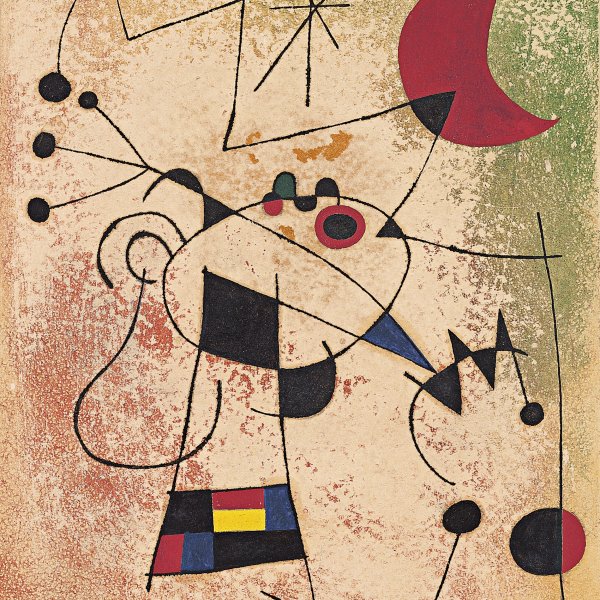Painting on White Ground
Most of Joan Miró’s paintings dating from between 1925 and 1929 are no longer descriptive as before and are practically monochrome. The only motifs that appear against the extensive blue, white, ochre or grey backgrounds are a series of undulating biomorphic forms, created by the dictates of dreams or spontaneous impulses, which Jacques Dupin identified as “the last stage in Joan Miró’s dream paintings” and William Rubin as an example of his “automatic painting.” As in other similar works, there are many different possible readings of this small painting, just as a poem can be interpreted in countless ways.
Recent studies on Miró have questioned the artist’s supposed automatism and the irrational, naïve and spontaneous nature of his painting, as his canvases are generally transcriptions of drawings or previous sketches. Christopher Green explains that Miró employed a two-step process: first he sketched the image automatically in a drawing and later transferred it carefully to canvas. Painting on White Ground is an almost literal rendering of a drawing housed in the Fundació Joan Miró in Barcelona.
Paloma Alarcó









